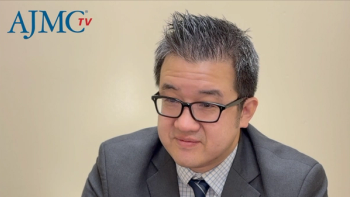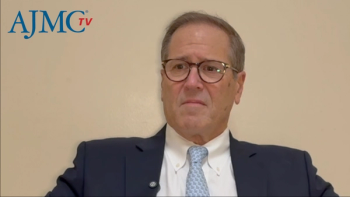
How to Utilize a Multimodal Treatment Approach for Childhood Obesity
Key Takeaways
- AAP recommends a multimodal approach to childhood obesity, including lifestyle changes, pharmacotherapy, and bariatric surgery, emphasizing early intervention and expanded treatment access.
- Addressing weight stigma and recognizing obesity as a complex, chronic disease are crucial for effective care, requiring compassion and collaboration among healthcare providers.
With obesity rates rising sharply, the American Academy of Pediatrics calls for multimodal strategies to address the crisis in youth.
As childhood
"Individuals living with obesity have obesity-related conditions that are starting at very young ages,” explained Vidmar. “You all are very aware of the dermatological conditions that happen. I can't tell you how often patients are coming into my office with acanthosis, and their parents are telling me about how they're bleaching their necks."
Acknowledging Weight Stigma
In the session, Vidmar emphasized that addressing childhood obesity begins with compassion, collaboration, and a clear understanding that obesity is a complex, chronic disease, not a personal failing. Central to effective care is treating patients with dignity and humanity, breaking down weight stigma, and recognizing that every health care provider has a role to play. Whether by providing treatment directly, making timely referrals, or simply initiating respectful, patient-centered conversations, clinicians must work together across primary and specialty care. The AAP advocates for this team-based approach to improve outcomes and quality of life for children living with obesity.
“It's really a team sport, and it takes all of us, but we have to start by acknowledging what it means within the larger body and the stigma that our patients experience,” said Vidmar. “I'm hoping that we can go to this together and acknowledge that really treating pediatric humanity is our greatest tool in providing our patient experience in every space."
Historical Context and AAP Guidelines
In 2023, the AAP released its first comprehensive obesity treatment guidelines in 15 years, signaling a major shift toward a more practical, compassionate, and severity-based approach. Emphasizing a child-centered approach, the clinical practice guidelines consider the child’s overall health, family dynamics, community context, and available resources to guide individualized care.2
These recommendations were soon reinforced by guidance from the Diabetes and Endocrinology Commission, further supporting a coordinated, whole-person approach to obesity care, explained Vidmar.
Multimodal Approach Principles
The key principles to managing obesity using a multimodal strategy combine intensive behavioral interventions, lifestyle modifications, pharmacotherapy, and, in some cases, bariatric surgery, explained Vidmar. However, treatment is often challenged by limited provider time, resource constraints, and the impracticality of past guidelines. To overcome these barriers, clinicians are encouraged to do the best they can with available resources, collaborate across specialties, and match treatment intensity to disease severity. Like other chronic conditions, obesity demands a personalized, flexible approach that recognizes not every patient will respond to the same interventions.
"The treatment of obesity is really a multimodal approach, but it hinges on the fact that obesity is a complex chronic disease,” said Vidmar. “It is not the fault of the patient or their parent."
Barriers to Bariatric Surgery
Vidmar also highlighted significant barriers to pediatric bariatric surgery, emphasizing that physician reluctance remains the primary obstacle to care.
"Last year, the NIH reported that 2.5 million children qualified for bariatric surgery and 2500 got it,” said Vidmar. “There is a huge disruption between how we're using this treatment, some of which is access, but a lot of which is because we are not talking about it."
The
Therefore, Vidmar urges clinicians to reconsider their role in this treatment gap and to advocate for appropriate referrals, ensuring that eligible children have the opportunity to benefit from this life-changing intervention.
References
1. Vidmar A. Managing obesity with an eye toward dermatology. Presented at: SPD 2025. July 24, 2025. Seattle, WA.
2. Hampl SE, Hassink SG, Skinner AC, et al. Executive summary: Clinical practice guideline for the evaluation and treatment of children and adolescents with obesity. Pediatrics. 2023;151(2):e2022060641. doi:10.1542/peds.2022-060641
Newsletter
Stay ahead of policy, cost, and value—subscribe to AJMC for expert insights at the intersection of clinical care and health economics.







































